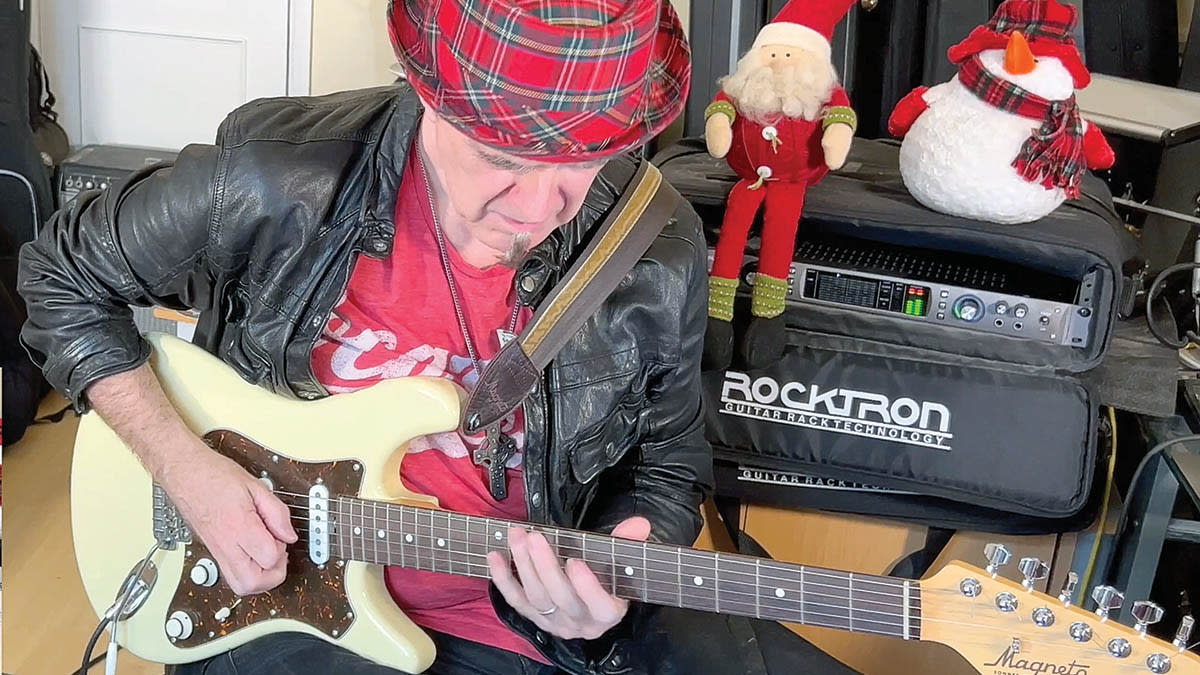Learn to play In the Bleak Midwinter with this festive jazz-blues guitar arrangement that really sleighs

- Oops!Something went wrong.Please try again later.
In this lesson, we’re embracing the Yuletide season with an arrangement of the great Christmas carol In the Bleak Midwinter. The words are by the poet Christina Russell and the original music was composed by Gustav Holst – the composer of the Planets Suite. Holst has been a massive influence on classical and film composers.
I decided to reharmonize the melody for a more personal and contemporary jazz blues sound. While my version has some advanced harmonic moves, I left enough room for the blues-based phrasing in the improvisation.
Rather than use a rhythm section, I chose to write an accompaniment which featured a rich-sounding choir, sung wonderfully by Patti Revell Jones.
The first statement of the melody is fairly simple. Whilst I didn’t try to emulate him, one of the best sources for inspiration when stating a melody has to be Jeff Beck. Jeff had an incredible flair for really selling a melody, sometimes only adding a few inflections like a slide in or whammy bar dip for colour.
Only in bar 13 do we have a melody line that differs from Holst’s version – this is to follow my underlying harmony.
The solo is based on a slightly simpler set of chord changes - if you metaphorically squint at them, it’s largely just F-Bb-C. Jeff was definitely the inspiration for doing this. In his version of Goodbye Porkpie Hat, he abandons the melody changes for the solo in favour of a blues sequence to give room to improvise freely.
The solo combines blues phrasing with lines that follow the chord changes. The Bb chords often get the tonic F blues scale as Bb is chord IV in the key of F.
Another bluesy detail is the use of lines that are based on the I chord over the preceding V chord – see bar 21. You’ll hear blues players and the likes of George Benson use this approach.
The use of the tonic blues scale in bar 22 slightly pushed the envelope as the sound of the harmony is very ‘major’ – if you don’t hang on the really dissonant minor 3rd or the b7 for too long they sound like a sassy blues-leaning inflection.
It’s worth noting the use of the Eb major 7th arpeggio over the Bb7 sus4 in bar 23. This underlines the colour of the chord – Bb7sus can sometimes be seen as Eb with Bb in the bass – although this interpretation leaves out the crucial b7th degree.
Bar 24 has something of a bebop feel to it as it weaves through the chord changes and ends with a classic move using the b9 on C7.
The melody at bar 42 is developed with bluesy fills to add another dimension to the piece and worth using for your own solos.The melody at bar 49 is adapted to fit the underlying harmony.
Have fun with this and feel free to do your own thing with the solo, leaving out or adding notes. If you are new to playing over chord changes, the first step in nailing a set of changes is to play the chord tones – 1, 3, 5, 7 for each change. Run the arpeggios up, then down, then look to link the notes of one arpeggio to the next by finding the nearest chord tone on the next chord.
Get the tone
Amp Settings: Bass 6, Middle 5, Treble 6, Reverb 4
I used an American-style amp with reverb and delay. A smooth overdrive pedal like a Blues Driver, Zendrive or a Timmy is worth considering for Robben Ford or Larry Carlton-styled tones. A compressor pedal can help with sustain – some offer a mix function that allows softer dynamics to occur.

